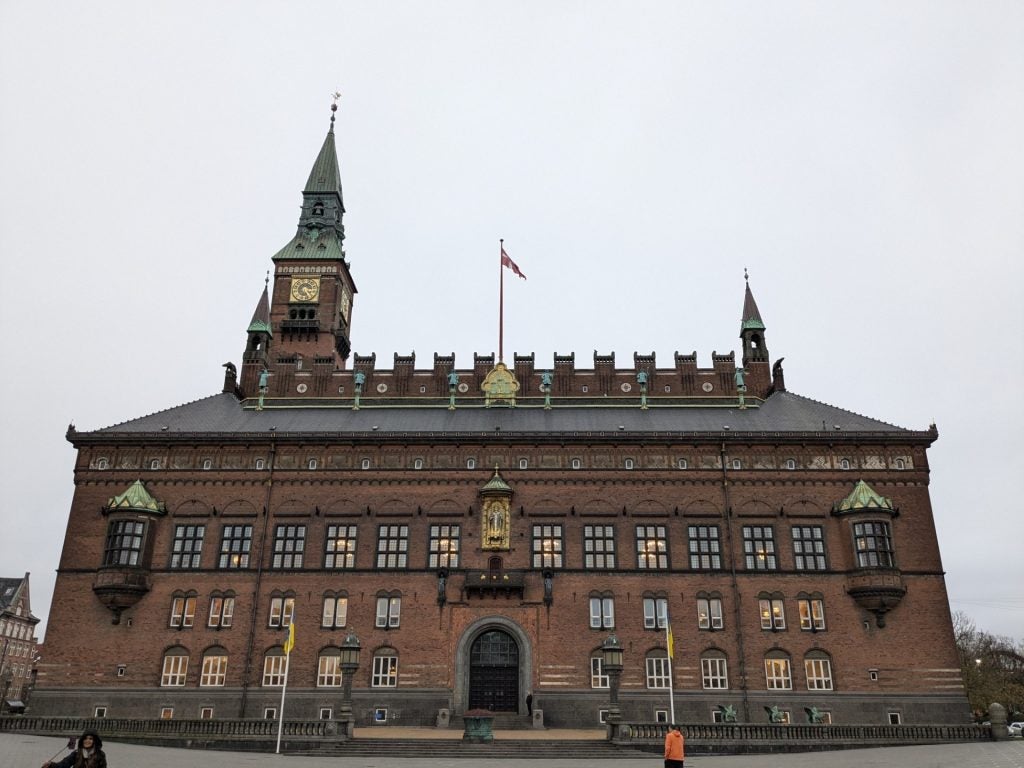
Railway design engineers met in Copenhagen, Denmark for the annual Autodesk Rail Summit, where the construction technology firm hosted discussions on the implementation, challenges and innovation in Building Information Modelling (BIM).
Autodesk is a multi-sector multinational that provides software, in this case for architecture, engineering, and construction (AEC) professionals in the railway sector. Its suite of tools includes Civil 3D and Revit which allow users to visualise design data and test all kinds of railway infrastructure and signalling before building, and keep an accurate record of assets for maintenance.

Discover B2B Marketing That Performs
Combine business intelligence and editorial excellence to reach engaged professionals across 36 leading media platforms.
Selling efficiency
The nature of data collected and utilised in the sector has changed from black-and-white drawings, to MX files and multi-coloured 3D visualisation uses – and that breeds both opportunity and challenges, as Martin Laursen of Banedanmark puts it.
The transport sector, and rail in particular, is key to growing global infrastructure spend – including signalling innovation like ETCS. But there is an efficiency problem with data in the field, according to Autodesk’s infrastructure business strategy director.
“We’re really challenged to how we manage that information and how we do that across the entire life cycle, and try to reduce the amount of data loss and make a more seamless experience for handling this information, and to do that in rail is complex,” Eric DesRoche said.
“It’s much more complex than a lot of other projects we see in infrastructure, and that’s because often you’re not building a brand new rail system, you’re retrofitting or upgrading or improving existing infrastructure, and you’re constrained to that corridor, so you don’t have the same luxuries you do in other transportation systems, like airports and roads and highways,” he explained.

US Tariffs are shifting - will you react or anticipate?
Don’t let policy changes catch you off guard. Stay proactive with real-time data and expert analysis.
By GlobalDataThe digital twin model, along with specific digital project delivery software, is therefore the way to go.

“We have to find a way to design digitally and use that digital information, or that digital twin, to help us with all the logistics and the planning for that construction. And to do that here at Autodesk, we like to say that BIM as a process is really the backbone to this digital transformation that we’re going through, and the way we deliver and manage that data across the life cycle is digital project delivery.”
The target of Autodesk’s work has therefore been improving the efficiency of data management on large projects. But DesRoche explains the issues it faces with customers at different stages of digital transformation, whether focused on digital upgrades like signalling or on-the-ground hardware like tracks.
“What we’re really trying to do with digital project delivery is to take all of the imitations that we have in an analogue process and move it over to a digital process, so that we can take advantage of better and greater workflows, ensuring that the right person has the right data at the right time. But there’s challenges to doing this, and there’s challenges if an organization doesn’t adopt cloud technologies and the ability to share information.
“And some of the barriers that are holding customers back from moving in this journey with us [include] cost constraints, simply the fear of change or the lack of guidance standards or approach,” he added.
Şaban Kuş, a digital twin leader and electrical engineer for Metro Istanbul, described that difficulty in uptake coming from construction engineers and workers rather than operators or governments, with perceived speed being a sticking point. Essentially, he said, they want to stick to what they know.
“If we ask them, they don’t want to use a BIM process, they [just] want to finish the job and leave to the next job,” he said.
“[But] there is a process going on to change the mindset,” Kuş added.
But when construction companies and railway operators do sign up to a digital approach, they say outcomes allow innovation.
Users’ view
Arcadis has worked with the Netherlands’ rail infrastructure manager ProRail to digitize its entire network’s object library, creating workable solutions from a mass of location data for literally every nut and bolt on the Dutch rail lines, from stations to signalling.
The firm said its process of “digitalisation and datafication” led the to creation of its “DynDash” strategy, the name being a portmanteau of “dynamic data sharing,” project manager Jeroen Kooistra explained.
Using this framework, they have used Autodesk software to build a solution and a “Matrix”-like interface.
“Our initial situation, so, we get a data set, instead of a set of drawings, just data. Then we have our solution… Put that data in it, modify it, alter it, and reverse it back into the in terms of the signalling design.”
“So now we go into a little bit of the analogy. This the Matrix. Neo in the beginning, he saw only letters on the screen. But Docker was able to see kind of information. He saw actual information within the Matrix, in the data,” Michel Groen of Arcadis told Railway Technology.
“And actually what we are doing is… We have a lot of data, but if I give this information to our users, they are not able to work with it now, because they are designers, suppliers, who are used to work with AutoCAD or civil products that we usually work with. And so what we had to do is making sure that that data would translate into something that could work for those people.”
“That’s why we came up with DynDash. With that we can embed all of the information that we get from ProRail. We can push in. We have a lot of open source APIs, available in the Netherlands that we can embed within the system. We can connect to different solutions like Civil 3D, Revit, or we have a unity plug-in as well,” Kooistra added.
*This article was edited to reflect Şaban Kuş’s view that construction workers on the ground might not understand BIM processes, but the construction companies as a whole do.



